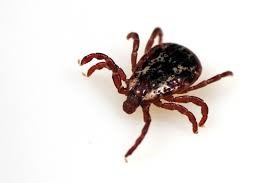As a pet owner, we are sure you know about the beloved tick. In Orange County, NY and surrounding areas, the tick is no longer just around for the warm months. Our winters are not as cold as they once were, so the tick lives on even during the cold months. This means that the best way to keep your pet safe from tick-borne illnesses is by treating your pet all year round.
Ticks can be prevented with oral or topical products. It is also always a good idea to check your pets for ticks regularly.
Bringing your pet to the veterinarian once yearly for a physical is a great way to ensure your pet is healthy. Veterinarians can perform yearly testing for tick-borne illnesses because some pets may not show any signs of illness. Veterinarians can also provide information on the best tick preventatives for your pet’s lifestyle and make recommendations on vaccinations such as the Lyme Vaccine, which will add extra protection against Lyme Disease for your pet.
If you believe your pet is showing signs of tick-borne illness or if you found an engorged tick on your pet, give us a call at 845-986-9900 to book an appointment today.
Common Tick-Borne Illnesses in NY State
Lyme Disease
Lyme Disease is a bacterial infection that is transmitted by the bite of an infected Blacklegged tick. While some pets may show no signs of illness, common symptoms include fever, loss of appetite, decreased activity, joint pain, intermittent limping or lameness, and increased thirst and urination.
If not treated, Lyme Disease can lead to kidney disease, damage to the nervous system, and heart damage.
Some veterinarians offer the Lyme Disease vaccination, which offers extra protection to your pet. It is still recommended to keep your pet on year round tick preventatives.
Anaplasmosis
Anaplasma is a bacterial illness that is transmitted through the bite of an infected Blacklegged tick. While some pets may show no signs of illness, common symptoms include fever, loss of appetite, decreased activity, joint pain, intermittent limping or lameness.
If not treated, Anaplasmosis can result in serious health complications such as respiratory failure, organ failure, and bleeding problems.
There is no vaccination for anaplasma, so year round tick prevention is used for protection.
Ehrlichiosis
Ehrlichia is a bacterial illness spread through the bite of an infected brown dear tick. Signs of ehrlichiosis is typically divided into three stages: Acute (early disease), sub-clinical (no outward signs of disease) and clinical/chronic (long-standing infection).
Acute Signs/Symptoms include fever, swollen lymph nodes, respiratory distress, weight loss, bleeding disorders, and occasionally neurological disturbances. This stage typically lasts 2-4 weeks. Some pets may eliminate the infection or move onto the sub-clinical phase.
During the sub-clinical phase, there are no outward signs or symptoms of infection but there may be signs on bloodwork. Some pets may eliminate the infection or move onto the Chronic/clinical phase.
The chronic/clinical phase of ehrlichiosis occurs if the immune system is not able to eliminate the organism. Problems such as anemia, eye problems, bleeding episodes, lameness, neurological episodes and swollen limbs may occurs in this phase.
There is no vaccination for ehrlichiosis, so year round tick prevention is used for protection.
Flea/Tick Preventatives
Bravecto – Oral and Topical, Combination Coverage (Fleas and Ticks), 12 weeks of coverage, products available for dogs and cats
Credelio – Oral, Combination Coverage (Fleas and Ticks), 30 days of coverage, products available for dogs and cats
Simparica Trio – Oral, Combination Product (Fleas, Ticks, Intestinal Parasites, and Heartworm), 30 days of coverage, products available for dogs
Simparica – Oral, Combination Product (Fleas and Ticks), 30 days of coverage, products available for dogs
Nexgard – Oral, Combination Coverage (Fleas and Ticks), 30 days of coverage, products available for dogs
Seresto Collar – Topical, Wearable Collar, Combination Coverage (Fleas and Ticks), 8 months of coverage, products available for dogs and cats
K9 Advantix II – Topical, Combination Coverage (Fleas and Ticks), 30 days of coverage, products available for dogs
Revolution Plus – Topical, Combination Coverages (Fleas, Ticks, Intestinal Parasites, and Heartworm), 30 days of coverage, products available for cats
Common Ticks in NY State
Blacklegged Ticks (Deer Ticks)

Lone Star Ticks

American Dog Ticks

Asian Longhorned Ticks

NYS Department of Health offers a map that tells your tick risk score depending on your region. In order to find out what your risk score is, check out the website below:
https://www.health.ny.gov/diseases/communicable/lyme/risk_score_map.htm
 Bouts of diarrhea for your pet can be very overwhelming. With the endless trips outside and the constant worrying about an in-home accident, you may be at your whits’ end. Many online sources recommend pumpkin as a great quick fix for diarrhea in pets due to the fiber found in pumpkin puree, but is it enough?
Bouts of diarrhea for your pet can be very overwhelming. With the endless trips outside and the constant worrying about an in-home accident, you may be at your whits’ end. Many online sources recommend pumpkin as a great quick fix for diarrhea in pets due to the fiber found in pumpkin puree, but is it enough? So, what should you give your pet for their diarrhea? Fiber capsules are a great way to ensure you are giving your pet enough fiber without the additional sugar and salt. We recommend using Vetasyl, which comes in 500mg capsules that you can give top your pet manually or pour directly onto your pets food.
So, what should you give your pet for their diarrhea? Fiber capsules are a great way to ensure you are giving your pet enough fiber without the additional sugar and salt. We recommend using Vetasyl, which comes in 500mg capsules that you can give top your pet manually or pour directly onto your pets food.










 POV: You wake up in the morning and your dog
POV: You wake up in the morning and your dog We are sure that you have heard about the mysterious canine respiratory disease that is sweeping the nation and you probably want some answers. The cause of this infectious canine respiratory disease is still under investigation. The most common respiratory diagnostic tests have been largely negative for the known organisms that cause coughing in dogs.
We are sure that you have heard about the mysterious canine respiratory disease that is sweeping the nation and you probably want some answers. The cause of this infectious canine respiratory disease is still under investigation. The most common respiratory diagnostic tests have been largely negative for the known organisms that cause coughing in dogs. 
 September is a crazy month. While trying to get school supplies for your young student and starting to bring out the fun fall décor, we tend to forget about what our pets may need for the upcoming months.
September is a crazy month. While trying to get school supplies for your young student and starting to bring out the fun fall décor, we tend to forget about what our pets may need for the upcoming months.
Recent Comments